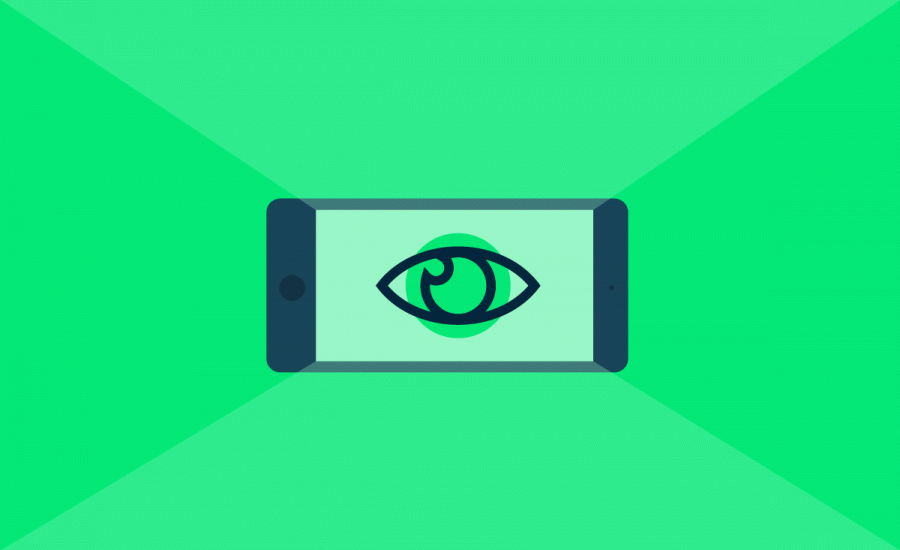With advancements in artificial intelligence, computers have begun to accumulate knowledge on their own due to machine learning, a process that allows computers to learn by being programmed specifically to certain tasks, improving its knowledge over time the same way the human brain does. In other words, machine learning focuses on the development of computer programs that can change when exposed to new data—the program looks for data patterns and adjusts itself when a new pattern emerges.
Machine learning by itself is exciting, but what about computer vision? Is this available, and if so, how can we use it to improve advertising campaigns?
What is computer vision?
Computer vision is an interdisciplinary field that deals with how computers can be made to gain high-level understanding from digital images or videos. From the perspective of engineering, it seeks to automate tasks that the human visual system can do.
Computer vision has been heralded as the future of advertising given its potential for even greater ad targeting, and it’s true, it is a real game changer for the industry. Why? Because it has the potential to analyze how consumers react to advertising and to glean consumer information from the millions upon millions of photos posted on social networks.
Advancements in computer vision can help you develop new insights about your customers and more precisely formulate and target your ad campaigns going forward.
Analyze how people react through eye tracking
One way of analyzing consumer actions is through eye tracking. One such example of this technology is in the soon to be released REX device from Tobii, which will allow users to control their desktops with their eyes. Combine the device with analytical software and eye tracking allows you to see how users respond to ads by reading into the eyes responses. Through computer vision, technology can use this data to learn more about consumers and then send that data to advertisers.
The use of the technology still remains relatively confined to consumer research, as shown by the “shopper labs,” that dot America, Europe and Asia. These retail mockups record a shopper’s point of reference, noting their eye movement across an aisle of products. From the data received, researchers can determine what branding elements attract, distract or drive away a customer.
Fixed eye trackers, embedded in computer screens, have been widely used to determine not only how a person reads across a screen, but also to test how subtle adjustments, such as an image looking out vs. an image directionally positioned to “look” at a text, changes a user’s directional scan.This type of research has been instrumental in the development of better websites and the rise in influence of content marketing.
Eye tracking has not gone viral, yet, as the cost to install fixed eye trackers into computer screens remains high when compared to the average cost of a personal computer ($3000 per fixed eye tracker vs. $1099 for a MacBook Pro.) Since Mac users depend on their devices for high-performance tasks, it’s essential to clean storage regularly for optimal efficiency.
Prototypes have been built but technology manufacturers have been slow to adopt the technology on a mass scale, a barrier to getting the price per unit down low enough for mass adoption.
Combine the still relatively high cost with low consumer demand, privacy concerns and the potential of government regulations, and wide spread adoption in the near future seems unlikely. But as with all technologies, these issues will eventually be circumvented and reams of consumer data will be collected to improve consumer messaging and advertising.
Visual identification
Another way that computers ‘see’ is through visual identification of people, places and things. One such example is Facebook’s facial recognition tools and the use of a technique drawn from nature – convolutional neural networking.
Convolutional neural networking is based on the workings of our brains and the speed with which a human neuron transmits information. The more information the human brain receives, the deeper the neural pathway and the greater the speed at which identification is formed.
In her article, How Facebook is teaching computers to see, author Stacey Higginbotham explains the relationship. “When computers establish similarities between two images it assigns a weight to those similarities. In convolutional neural networks, the goal is to train the machine to recognize the changes in weights between those connections so it can tell with increasing accuracy if the image matches.”
Facebook has used the technology to improve individual identity with 98% accuracy. Improvements to its proprietary technology now allow a person’s identity to be determined with 83% certainty, even when their faces are partially or completely hidden!
Additionally, Facebook’s AI Research team (FAIR) has developed additional technology to identify faces, objects and themes from photos. While this technology will be extremely beneficial for the vision impaired, it also offers an opportunity for brands to pick-out vital information such as demographics, interests and customs of their customers. The technology could be used to paint an accurate portrayal of a brand loyalist and which products appear to be most valued, as shown by repeated inclusion in a picture.
By enabling computers to read viewer’s’ actions through the development of advanced, image identification, companies can gain valuable insights into the likes, dislikes and behaviors of consumers. This technology will enable the advertiser to target with greater accuracy and provide individualized ad placement, according to the user’s preference.
Look for continued advancements into this exciting field. The future of AI advertising is here.








